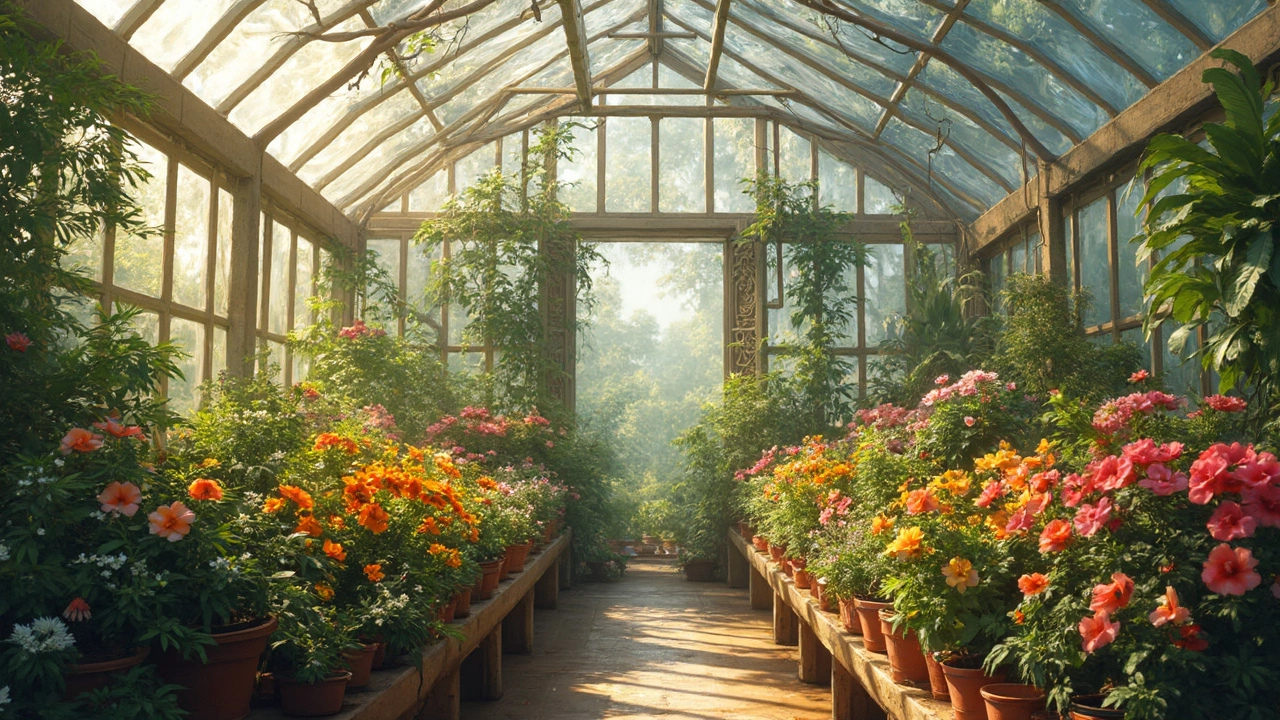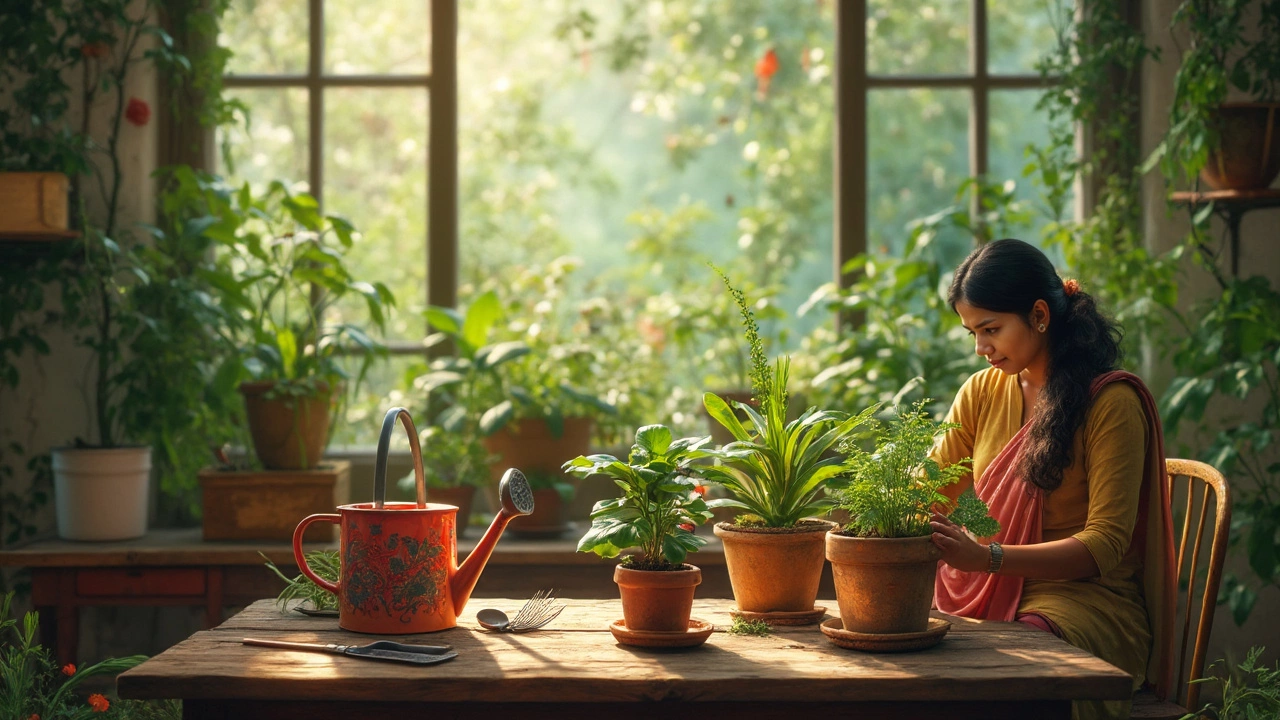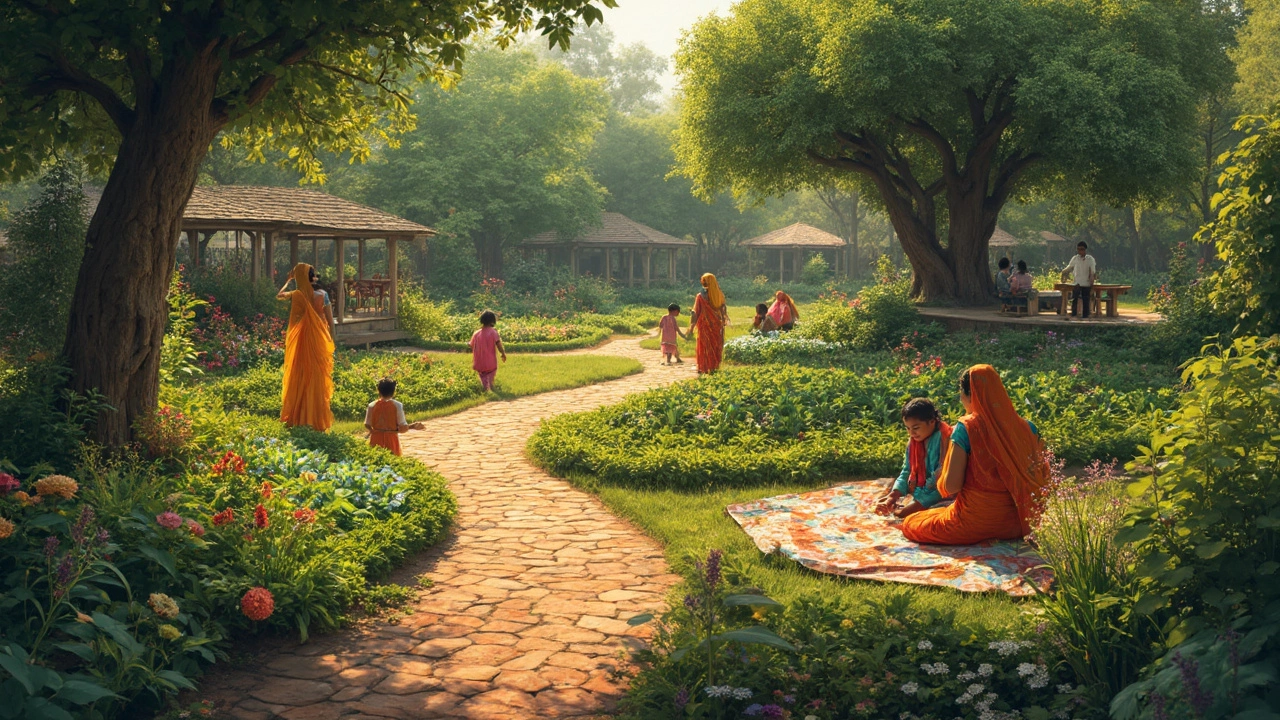Understanding the Difference Between Garden Soil and Topsoil
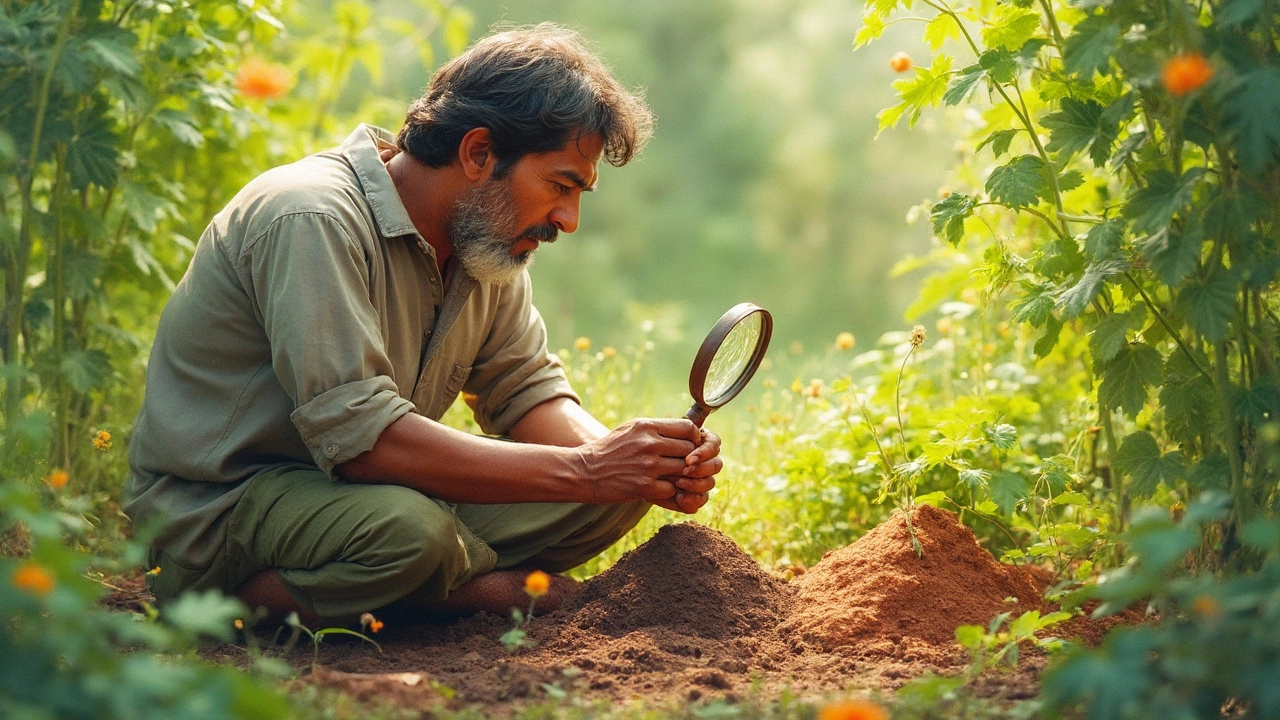
So you're gearing up to make the perfect garden, but you're facing a dilemma: garden soil or topsoil? If you’ve ever stood in a garden center, staring at bags of the stuff, wondering which one you need, you’re not alone. Many folks assume they're interchangeable, but oh, they're not.
Garden soil is typically a more enriched version and is a mix that includes compost, loam, and other organic materials. It's the good stuff that provides nutrients and ideal drainage needed for the delicate plants in your flower beds. Think of it like a gourmet meal for your hard-working garden.
On the flip side, topsoil is what you’d naturally find on the land surface before any enhancements. It's great for filling holes, leveling yards, or establishing new lawns. However, it's not always packed with nutrients, so if you’re planning to use it for growing flowers or veggies, you might need to mix in some organic matter to pep it up.
Knowing these differences can be a game-changer. Depending on what you're planting, choosing the right soil type will set the foundation for your garden’s success. Want thriving tomatoes? Opt for a rich garden soil mix. Just filling in a few patches on your lawn? Topsoil might be all you need.
- Defining Garden Soil and Topsoil
- Composition and Characteristics
- Choosing the Right Soil for Your Plants
- Improving Your Soil Quality
- Common Misconceptions About Soil Types
- Practical Tips for Your Garden
Defining Garden Soil and Topsoil
Getting down to the basics, garden soil and topsoil might look alike at first glance, but they play quite different roles. Let’s break it down so you can make the best choice for your garden.
What is Topsoil?
Topsoil is the uppermost layer of soil, typically the top 2 to 8 inches. It's what you find on the surface across most natural spaces. It’s made of sand, clay, silt, and a bit of organic matter. This soil type is great for basic gardening tasks, like filling in holes in your lawn or evening out ground levels. It often offers decent drainage but is usually not rich in nutrients without enhancement.
What is Garden Soil?
Garden soil, on the other hand, is like topsoil with a boost. It's topsoil that’s been mixed with compost or other organic materials to improve its nutrient content and texture. It often includes fertilizers adjusted for specific plants, which makes it ideal for flower beds and vegetable gardens. It’s designed to give plants everything they need to grow strong and healthy, right from the start.
Key Differences
- Nutrient Content: Garden soil typically has more nutrients thanks to added organic material and fertilizers.
- Usage: Topsoil works well for large areas of landscaping and general lawn care, while garden soil is perfect for nurturing specific plants and crops.
- Texture: Garden soil tends to have a finer, more consistent texture compared to the often clumpy or rocky nature of raw topsoil.
A key point to remember: the choice between garden soil and topsoil depends heavily on what and where you’re planning to plant. Both are important, but using them wisely is the real trick for a thriving garden.
Composition and Characteristics
When it comes to gardening, understanding what makes up garden soil and topsoil is key to ensuring your plants thrive. Both these soils have unique compositions that affect how they support plant life.
The Make-Up of Garden Soil
Garden soil often comes as a blend designed for planting. It's made of natural soil enhanced with compost or other organic materials, which enriches it. This boosts its ability to retain moisture and provides essential nutrients. Besides, garden soil usually has a good balance of sand, silt, and clay, which ensures optimal drainage and root growth.
- Organic Matter: It includes decomposed plants and animals, which provide the nutrients that plants need.
- Improved Drainage: Thanks to its texture, excess water drains away easily, preventing root rot.
- Nutrient-Rich: Packed with fertilizers and natural additives, garden soil is a nutritious breakfast for your plants.
The Nature of Topsoil
Topsoil, on the other hand, is the uppermost layer of any soil type, stripped directly from the earth's surface. It's generally less processed and not specifically tailored for planting vegetables or flowers. However, it's great for lawn projects and larger landscaping jobs where planting is not the primary goal.
- Basic Composition: Mostly made up of natural minerals and organic material that's naturally occurring, which can vary greatly.
- Structure and Drainage: Unlike garden soil, it might not have ideal drainage properties without modification.
- Not Uniform: Quality may vary depending on the source, making it somewhat unpredictable for those unfamiliar with soil assessments.
Knowing these characteristics can help you decide when and how to use each type for your gardening needs. You'll often find gardeners mixing topsoil with organic matter to create a custom blend that mirrors garden soil, particularly when they aim for a budget-friendly option. Remember, the right soil choice can be the difference between a flourishing garden and a lackluster one!
Choosing the Right Soil for Your Plants
Picking the best soil for your garden can be a game of chance, but it doesn't have to be. Knowing whether to use garden soil or topsoil depends a lot on the specific needs of your plants and the conditions of your garden.
Understanding Plant Needs
Different plants have varying needs when it comes to soil. Some love well-drained, nutrient-rich conditions, while others can thrive in less enriched soils. Garden soil, with its blend of organic materials, is ideal for flower beds and vegetable gardens where nutrients are crucial for growth.
When to Use Garden Soil
Consider using garden soil if you're:
- Planting perennials or annuals.
- Starting a veggie patch.
- Looking to improve existing beds with superior nutrients and drainage.
When Topsoil Makes Sense
Topsoil is perfect for jobs that need bulk rather than nutritional content, like:
- Leveling out your lawn.
- Filling in areas around walkways and foundations.
- Base layers for new grass seed or turf.
Just remember, if you choose topsoil for planting, you'll want to mix in some compost or other organic matter to give your plants a nutritional boost.
Checking Soil Quality
Before you dump a bag into your garden, check the quality. Look at the texture and check for any large debris. Ideally, soil should feel crumbly and light in your hands but not dusty.
If it looks like store-bought perfection, that's a good start. Here’s a simple quality check:
- Squeeze it: If it holds together in a clump but crumbles when poked, you’re in luck.
- Smell it: Good soil has an earthy, fresh smell, not musty or chemical-like.
- Look for color: Dark soils typically contain more organic matter.
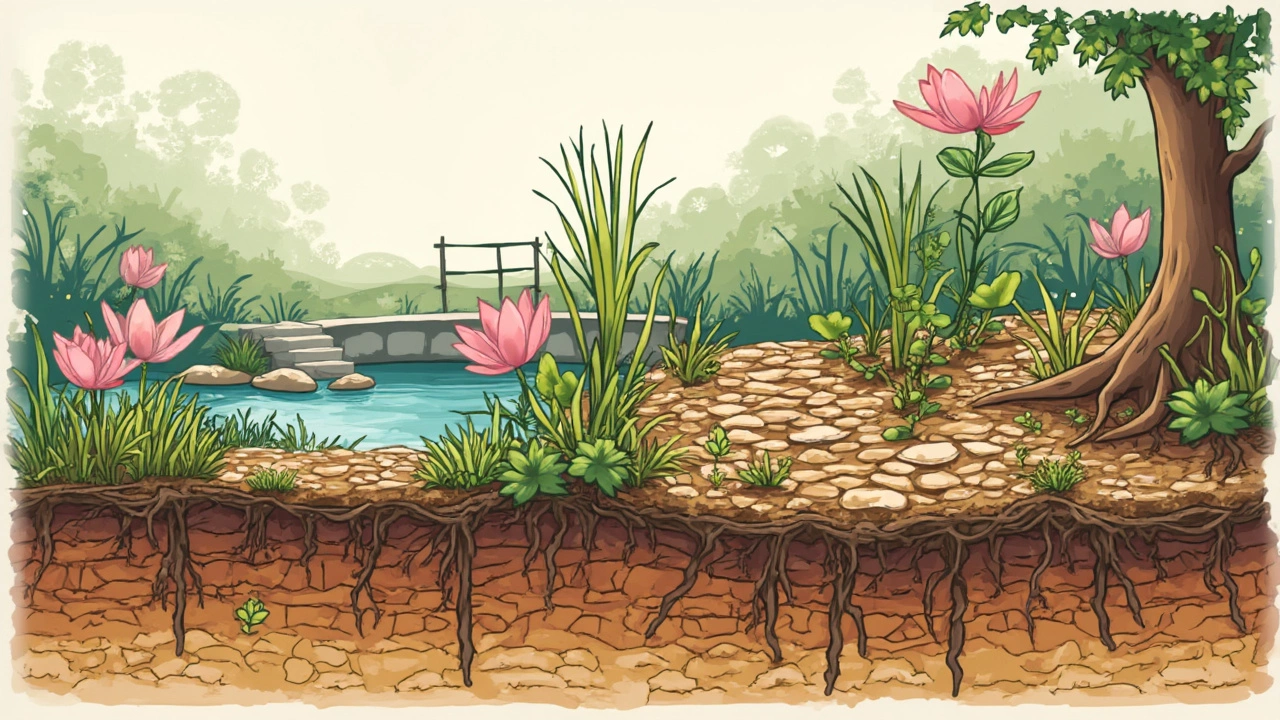
Improving Your Soil Quality
Alright, so you've got your topsoil and garden soil, but how do you make the most of it? It’s like giving your garden a little makeover, just without the heavy lifting—or maybe just a little bit of it. Let’s break down some practical ways to boost the quality of your soil.
1. Mix in Organic Matter
If there's one thing your soil loves, it’s organic matter. Think compost, well-rotted manure, or even leaf mold. Tossing some of this into your garden can work wonders for soil structure and nutrition. You might even consider starting your very own compost pile—it's eco-friendly and gives you a constant supply of rich nutrients.
2. Soil Testing
Ever feel like you're shooting in the dark with gardening? A soil test can shine a light on exactly what’s going on down there. Knowing your soil’s pH and nutrient levels can help you make informed decisions about what amendments to add. Most garden centers sell easy-to-use kits, or you can send a sample to a lab for super accurate results.
3. Rotation and Cover Crops
If you’ve got the space, consider rotating your crops. It helps prevent nutrient depletion and can reduce pest problems. Growing cover crops, like clover or vetch, can suppress weeds and add organic matter when mixed back into the soil.
4. Proper Mulching
A good mulch can be like a protective blanket for your soil. It helps retain moisture, suppress weeds, and over time, breaks down to enrich the soil. Straw, wood chips, or shredded bark are common choices. Just make sure you don’t pile it too thick near plant stems.
5. Avoid Compaction
Ever try to breathe through a pillow? That’s what compacted soil feels like for plant roots. Minimize walking on garden beds and use paths to prevent turning the soil into a pancake. If compaction happens, gently aerate with a garden fork.
6. Water Wisely
Watering might seem straightforward, but there's a bit of an art to it. Overwatering can drown the roots, while underwatering leaves them parched. Aim to water deeply but less frequently to encourage roots to grow deeper.
Improving Soil Quality at a Glance
| Method | Benefit |
|---|---|
| Organic Matter | Improves structure and nutrients |
| Soil Testing | Informs nutrient needs |
| Crop Rotation | Prevents depletion |
| Mulching | Retains moisture, suppresses weeds |
| Aeration | Prevents compaction |
By using these strategies, you’re set to give your garden soil the boost it needs to flourish. Each garden is unique, so feel free to mix and match these methods to see what works best for you.
Common Misconceptions About Soil Types
It’s surprising how many myths circulate about garden soil and topsoil. You might have heard advice from well-meaning friends or even seen tips online that left you scratching your head. Let’s clear the haze around these soil types and set the record straight.
Myth 1: All Soil is Created Equal
One of the biggest misconceptions is that all soil is the same, just different names slapped on bags for clever marketing. Reality check: not true at all! Garden soil is specially enhanced to give plants the nutrients they need to thrive, while topsoil is more basic, primarily for structural purposes.
Myth 2: You Don't Need to Upgrade Your Soil
Some gardeners might think they don't need to bother with improving soil quality. While topsoil supports grass growth, it often lacks the nutrients crucial for fruit and vegetable plants. Not adding organic matter can result in a nutrient-poor environment that doesn’t support vigorous growth.
Adding compost or manure to topsoil enriches it, transforming it into a more plant-friendly medium.
Myth 3: High Price Equals Better Quality
Just because you splurged on the most expensive mix doesn’t mean you’re getting the best solution for your garden. Always check what’s in the bag. Sometimes, paying more just means a fancier package, not more nutrients.
Myth 4: Bag Labels Tell the Whole Story
Wouldn't it be nice if the bag labels told you everything you need to know? Unfortunately, that’s not the case. Labels often group a range of products under broad terms. It’s wise to ask around, do a little digging (pun intended!), and get to know what’s crucial for your backyard.
- Read the label and the small print for ingredient details.
- Consult your local gardening center for advice tailored to your specific area soil requirements.
Realizing these truths about soil can revolutionize how you plan your garden projects. Knowing the facts helps you make smarter decisions that benefit your plants and vegetables, ensuring your efforts lead to lush results.
Practical Tips for Your Garden
Getting your garden thriving means knowing a bit about your soil and how to make the most of it. Below are some practical tips for using garden soil and topsoil effectively, whether you're a seasoned gardener or a newbie.
Test Your Soil
First things first, if you’re not sure what you’re dealing with, it's a good idea to do a soil test. Testing kits are affordable and can offer insights into pH levels and nutrient content. With this info, you can figure out whether you need to amend your soil with organic matter or adjust the pH balance to suit your plants.
Enhance with Organic Materials
If you're working with basic topsoil, you might want to add compost or well-rotted manure. This boosts nutrient levels and improves drainage and structure. Mix these thoroughly into the soil to transform it into a more garden soil-like mixture that’s ready for planting.
Plan for Drainage
No plant loves soggy roots, so proper drainage is key. If your soil tends to retain water, consider adding sand or perlite. Raised beds or adding ditches can also help keep your plants' feet dry.
Consider Planting Zones
Different plants have different needs, so don't feel you must use the same soil mix everywhere. For instance, veggies love nutrient-rich garden soil, while lawns may just need topped-off topsoil. Planning your zones could lead to a healthier overall garden.
Regular Maintenance
Even the best soil needs some love over time. Each season, aim to refresh your plant beds with a layer of fresh compost or mulch. This doesn't just add nutrients; it also helps with water retention and weed control.
Know When to Ask for Help
If you're having persistent trouble with your garden's health, reaching out to a local expert can make a big difference. Taking a sample to a local nursery or extension service can provide tailored advice.
And there you go! These tips should help you make informed choices with your garden soil and topsoil. Happy gardening!


